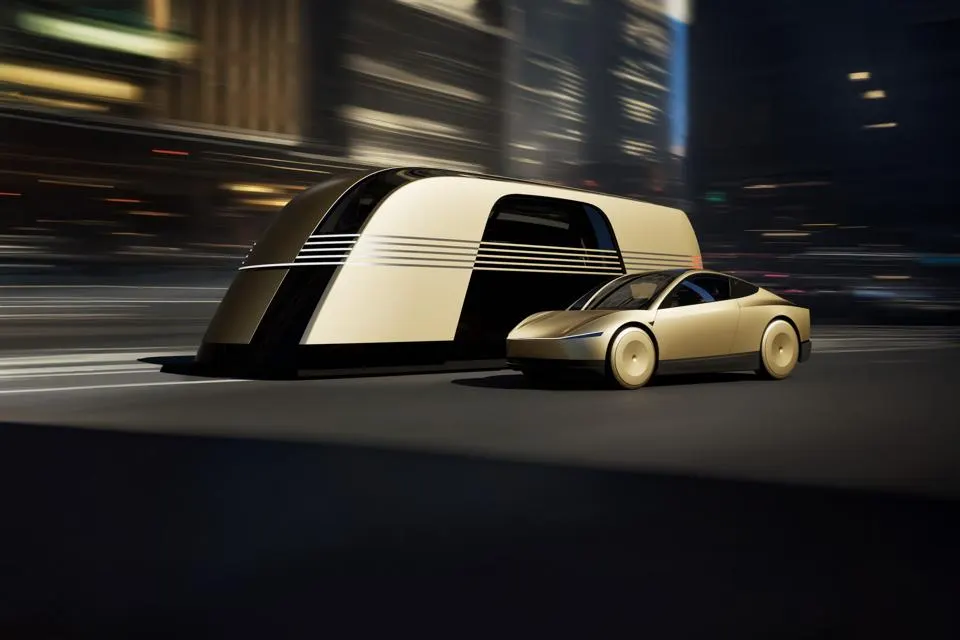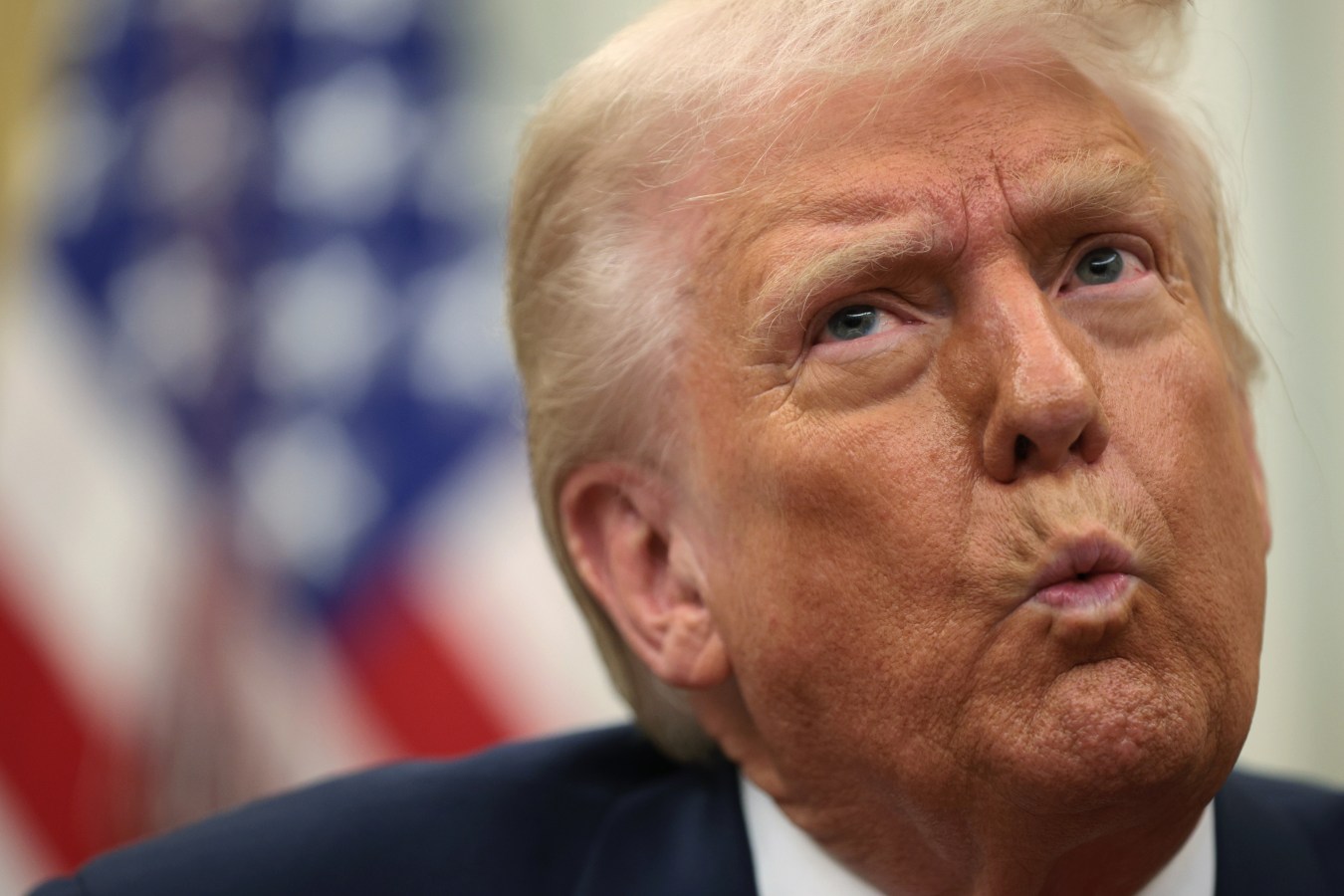After a great deal of hype, Tesla conducted its “We Robot” robotaxi reveal on Thursday Evening at Warner Studios in Los Angeles. The surprisingly short event consisted of a talk on the virtue of robotaxis by Elon Musk, plus an opportunity for guests to ride in a prototype vehicle around the studio lot. Also present were Optimus Prime robots which danced and served drinks. One rare surprising reveal was a 20-passenger “Robovan” meant for group transportation.

Few details were provided. The Robotaxi, also known as Cybercab, is a two-seater which will eventually cost around $30,000. It will use wireless inductive charging rather than the Tesla NACS connector. Individuals will be able to buy them and operate fleets to make income, but no details on this were provided, and Tesla no longer operates a press office to answer questions.
Musk promised the vehicles would run on vision and their new AI5 processor, and get into production in 2026. They would run an eventual non-supervised version of FSD which Musk, for the 8th year in a row, said would be working next year, though only in California and Texas if regulators allow. (Tesla at present has no self-driving test permits or applications for them.)
In reality Tesla FSD is still in very primitive shape. It’s at about the safety level that Waymo was in 2016, and Waymo is only now starting to scale 8 years after that. While Tesla may progress faster than Waymo did, it suggests they have a long way to go in making working Robotaxi software and associated infrastructure.
Particularly odd to me was that most of the presentation was a talk on the virtues of robotaxis very similar to the talks I have given often over the last 15 years—including to Musk himself, including some of the same lines. It’s great for that message to get out, in particular the transit replacement vision of the robovan — it’s a real message, mostly.
Today’s transit vehicles are too large to be efficient, as counter-intuitive as that seems. The most efficient vehicles in U.S. transit are vanpools, because van-sized vehicles offer the right compromise between the efficiencies of sharing and the downsides of sharing which hurt load factor and kill efficiency. The robovan, combined with 1 or 2 seater last/first mile vehicle can provide a door-to-door transit experience where nobody goes out of their way or faces trip delays, making transit people really want to use.
Owners Hiring Out Their Cars
15 years ago, I was a fan of this idea. It begins with another idea cited by Musk, that most private cars sit idle over 90% of the time, often much more. The thesis is that asset should be put to use, making money. That’s true for ordinary cars, but not for taxis. The typical taxi drives more than 60,000 miles/year. It wears out quite quickly, in 5-6 years, so it doesn’t wear out with time like a personal car, it wears out exclusively with miles. So if it sits idle, it’s only wasting the interest on the capital and the cost of parking. These costs turn out to be minor for a taxi fleet. One you turn your car into a reasonably used taxi, its life depends on how many miles of driving it does, not how long it sits idle.
But the bigger factor is this. Musk compared this approach to AirBnB. Originally AirBNB often rented out people’s actual homes and apartments while they were away from home. Today, almost all rentals are properties dedicated to being AirBnBs. Cars are likely to be the same, with dedicated fleets taking most of the business. Musk did talk about private owners who might buy several robotaxis and run a fleet, and that could be a possible business, but they would just need to put that fleet into a ride hail service, like Tesla’s or Uber. It’s unclear why Tesla would bother selling vehicles to people if they can so easily make money if Tesla hires them out. If the car is somebody’s private car some of the time, that can be a synergy, but to be the owner of a small robotaxi fleet is not likely to be a lucrative business.
On the other hand, it does make sense for private cars to temporarily join the a robotaxi hail service during times of extreme demand. That could make a bit of money but will not be a full time business.

The other things Musk spoke of are important, though. The ability to deliver ride service at very low prices, cheaper than bus service with a better experience can really change how people see transportation. The big shame is that Tesla is trying to do this with just computer vision, in order to save money. That will probably work some day, but Tesla has been very slow about making it work, and nobody knows the day that this will change. Other companies have real working robotaxis because they have taken a “Tesla Master Plan” approach of starting with more expensive and superior equipment, planning to make it cheaper later.
Wireless Charging
Wireless charging does have an advantage for a robotaxi, as it can charge itself. That’s really important for the future of charging as you no longer need to put charging everywhere. Anywhere you park, a robocar can zip off while not being used and recharge itself. On the other hand, at present wireless charging does not support fast charging. Any wireless transfer losses at 100kW or more could be very problematic. It’s possible a robot could park so precisely as to have physical contact between the charging coils, reducing losses, but this would be a new function, and Tesla did not provide details. When your car is a robot, if you put a traditional plug (like NACS) on the front or back of the vehicle, the car can plug itself in without needing any robotics in the plug. It’s a bit odd that Tesla, after winning the charging plug wars, wants to switch to a new charging system.
Optimus Robot
Tesla showed off their humanoid robot, and indicated that some day these robots would cost $30,000 and be able to do “anything you like.” They incorporate many technologies from the cars. Few details were given.
Another less expected reveal (though predicted by some) is that Tesla wants to build a system so that people can sell compute time on the AI processor in their Tesla cars when the car is not in use (and plugged in and on wifi presumably.) AI compute farms are becoming a valuable resource, and while it might not be possible to do training on a distributed compute farm of this sort, other applications, and inference, might work.
This demo day left many viewers and Tesla followers perplexed. The demo was delayed from August in order to refine it, yet the show was short with almost no details. The concept cars shown were quite similar to others made by other companies, and the messages given were well known to those in the industry. They simply drove on a closed course, and did not match the renderings of the final design. It’s not clear why there was such a delay if so little was to be revealed. While car designs are nice, the core challenge of making a robotaxi is software safe enough to bet your life; without that you have nothing. Tesla told us nothing more about their progress on that aside from the vague assertion of imminent delivery which has been false for almost a decade. Tesla shares were down significantly in early trading.
This article was originally published on forbes.com.
Look back on the week that was with hand-picked articles from Australia and around the world. Sign up to the Forbes Australia newsletter here or become a member here.


